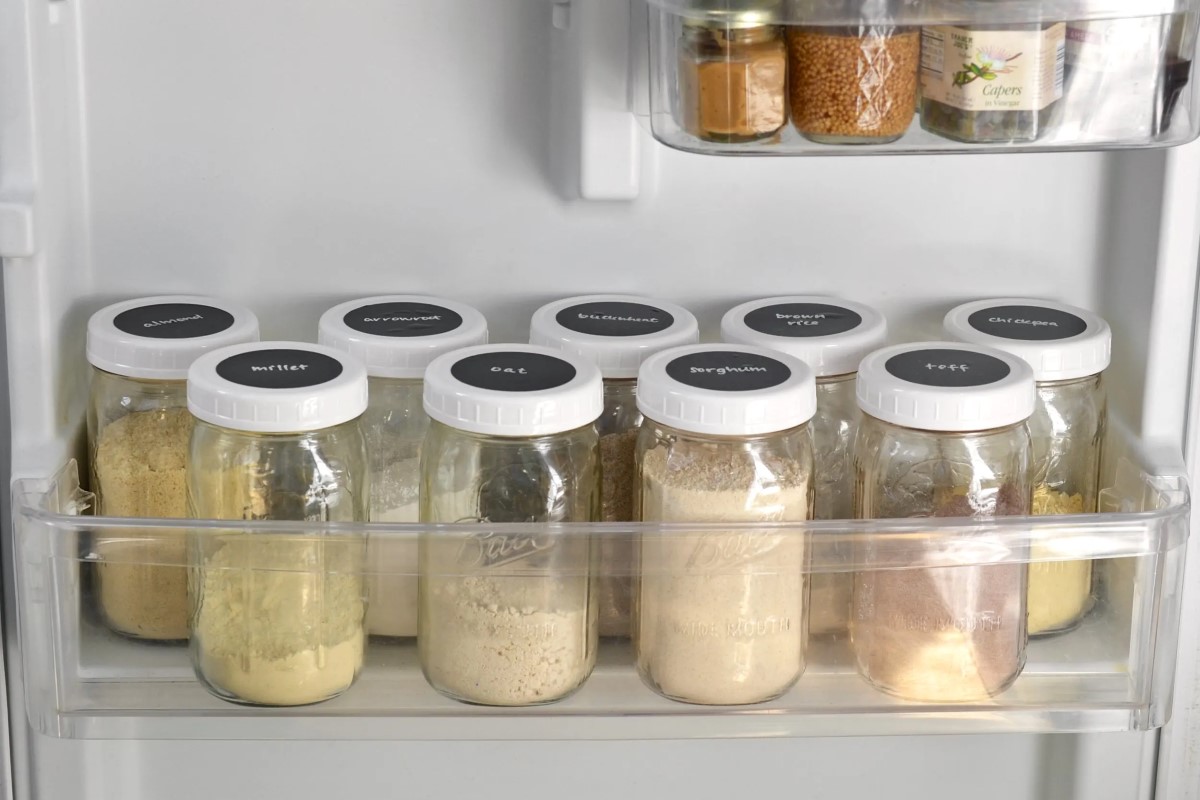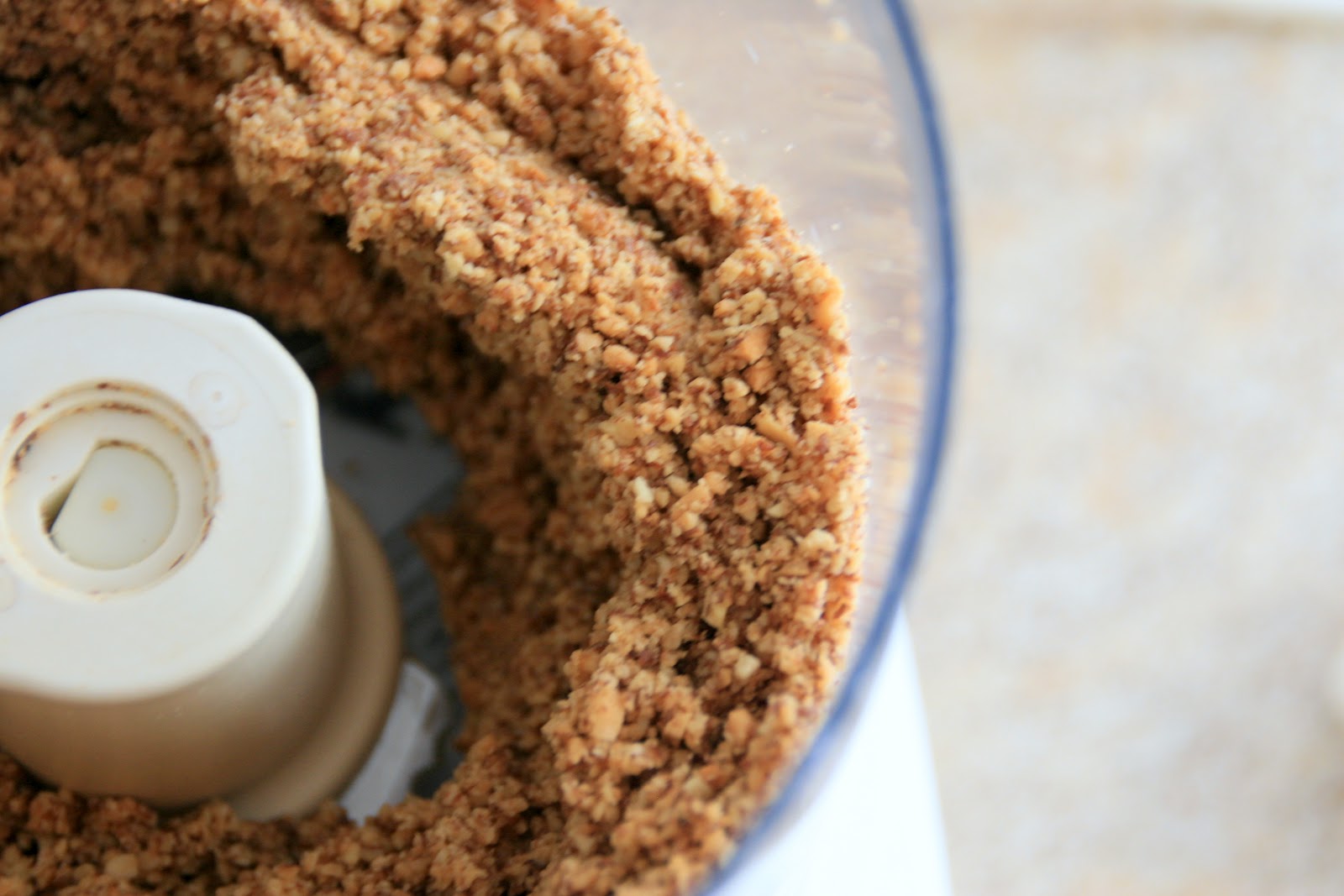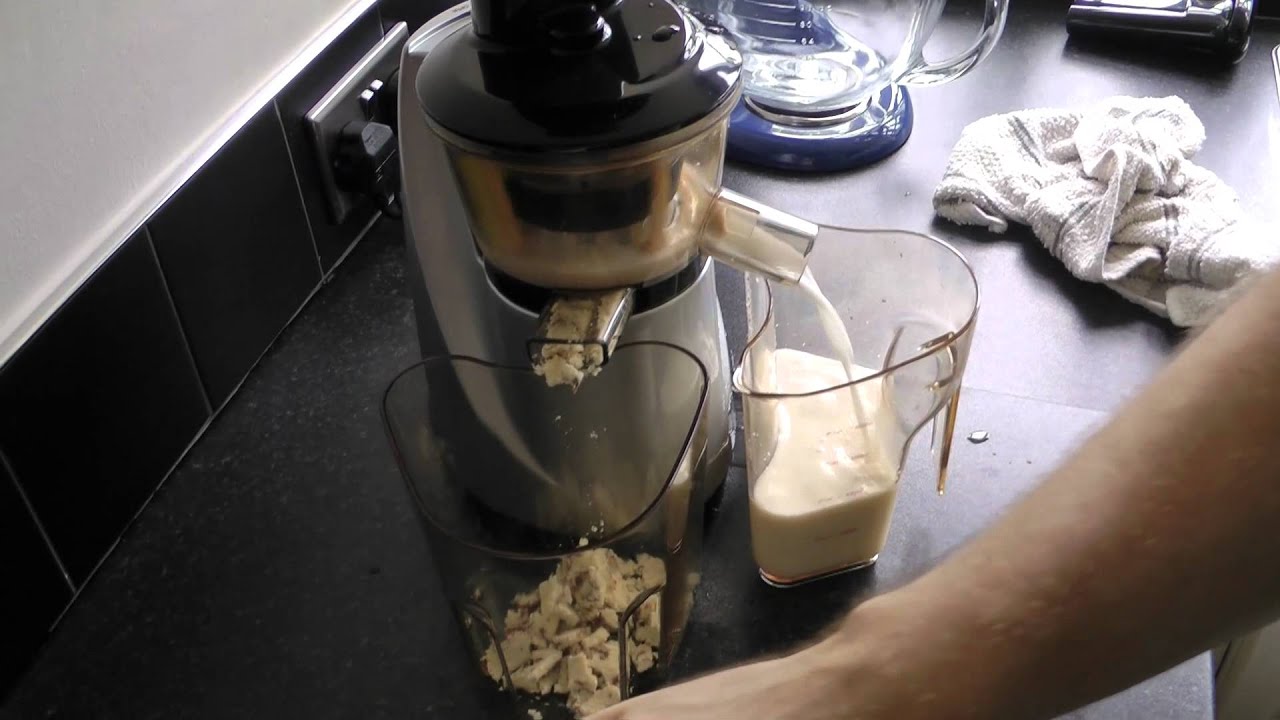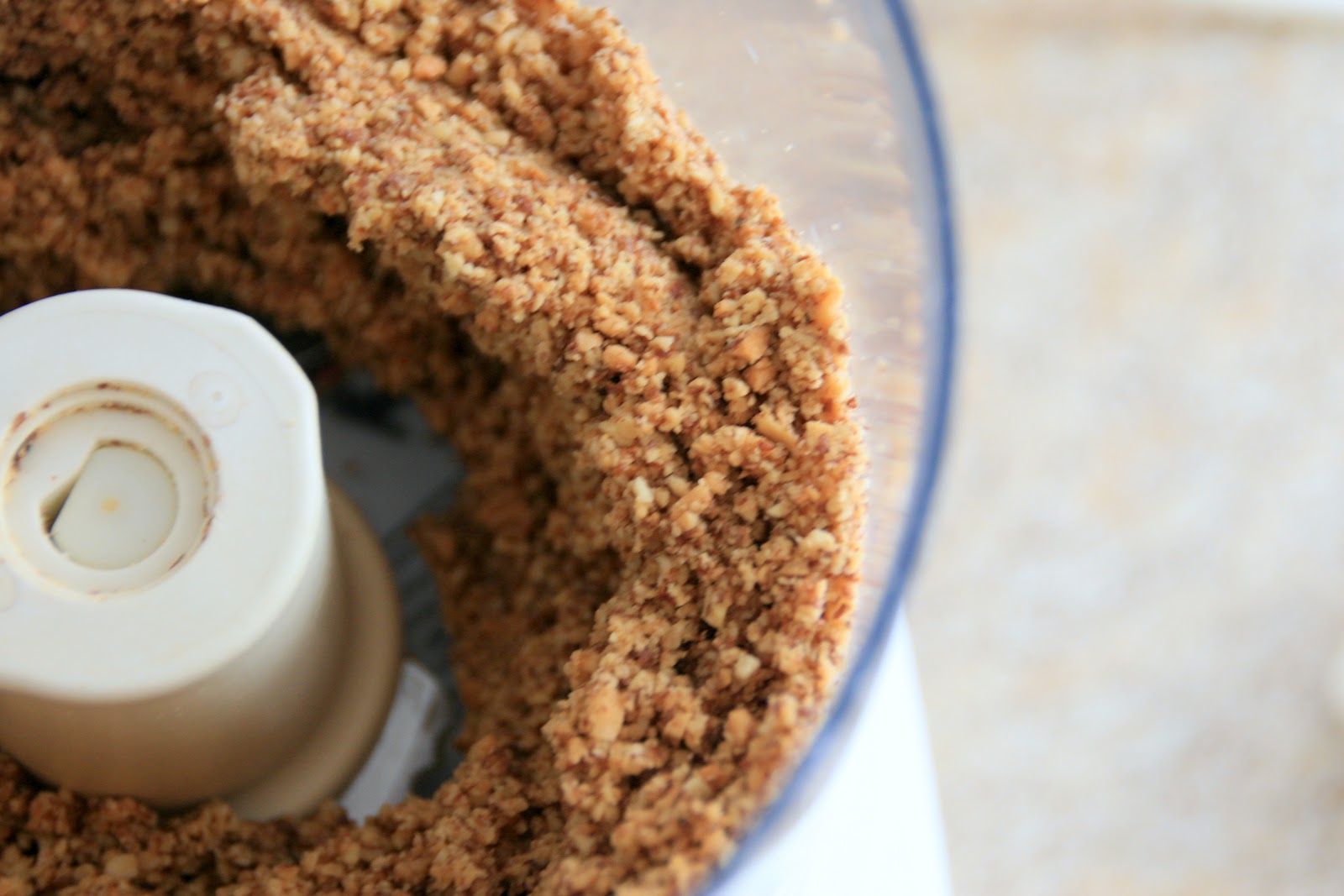

Articles
How To Store Almond Pulp
Modified: January 19, 2024
Learn how to store almond pulp efficiently with these helpful articles. Maximize the potential of your leftover almond pulp and reduce waste.
(Many of the links in this article redirect to a specific reviewed product. Your purchase of these products through affiliate links helps to generate commission for Storables.com, at no extra cost. Learn more)
Introduction
Almond pulp is a byproduct that is left over after making homemade almond milk or almond butter. This pulp is rich in nutrients and fiber, making it a valuable ingredient that can be used in a variety of recipes. However, if you find yourself with more almond pulp than you can use immediately, it’s important to know how to store it properly to maintain its freshness and quality.
In this article, we will explore different methods for storing almond pulp, including refrigeration, freezing, dehydrating, and using it immediately. Each method has its own advantages and considerations, so you can choose the one that best suits your needs and preferences. By properly storing your almond pulp, you can reduce waste and ensure that you always have this nutritious ingredient on hand for your culinary adventures.
Key Takeaways:
- Store almond pulp in the refrigerator for short-term use, freezing for extended storage, or dehydrating for long shelf life. Use immediately for maximum freshness and experiment with creative recipes to reduce waste and enjoy its nutritional benefits.
- Properly storing almond pulp maintains its freshness, flavor, and nutritional value. Follow storage tips, such as removing excess moisture, using airtight containers, and labeling for easy tracking. Embrace the versatility of almond pulp in your cooking and enjoy its numerous culinary possibilities.
Read more: How To Store Almonds
Why Store Almond Pulp?
Almond pulp is not only a delicious and nutritious ingredient, but it is also versatile in the kitchen. Here are some reasons why you might want to store almond pulp:
- Reduce food waste: When you make almond milk or almond butter at home, you are left with a significant amount of almond pulp. Storing it allows you to make use of this valuable byproduct rather than letting it go to waste.
- Economical: Almond pulp can be expensive to buy, so storing it can help you save money in the long run. Instead of purchasing almond pulp every time you need it, you can simply use the leftover pulp from your homemade almond milk or almond butter.
- Nutritious: Almond pulp is packed with nutrients, including fiber, protein, healthy fats, and various vitamins and minerals. By storing it, you can incorporate this nutrient-rich ingredient into your meals and snacks, boosting their nutritional value.
- Convenience: Having almond pulp stored and readily available allows you to easily add it to smoothies, baked goods, energy balls, and other recipes. It saves you time and effort, as you don’t have to make almond milk or almond butter every time you want to use almond pulp.
- Experimentation: Storing almond pulp opens up a world of culinary possibilities. You can get creative with different recipes and explore new ways to incorporate almond pulp into your dishes. It adds texture, flavor, and a subtle nuttiness to a wide range of recipes.
Now that you understand the benefits of storing almond pulp, let’s explore the various methods you can use to store it and keep it fresh.
Methods for Storing Almond Pulp
There are several different methods you can use to store almond pulp, depending on your preference and the timeframe in which you plan to use it. Here are four common methods:
- Option 1: Refrigerating Almond Pulp: Refrigeration is an easy and convenient way to store almond pulp for a short period of time, typically up to 3-4 days. After removing the almond milk from the pulp, place the pulp in an airtight container or a resealable bag. Store it in the refrigerator at a temperature of 40°F (4°C) or below. This method preserves the freshness of the almond pulp and prevents it from spoiling too quickly.
- Option 2: Freezing Almond Pulp: Freezing is a great option if you want to store almond pulp for an extended period, typically up to 3 months. After straining the almond milk from the pulp, spread the pulp onto a lined baking sheet in a thin layer. Place the sheet in the freezer until the pulp is frozen solid. Once frozen, transfer the pulp to a freezer-safe container or bag. Label it with the date and store it in the freezer. Freezing helps to maintain the texture and freshness of the almond pulp.
- Option 3: Dehydrating Almond Pulp: Dehydrating almond pulp allows you to store it for a significant amount of time, up to several months. Spread the pulp onto a dehydrator tray or a lined baking sheet and set the dehydrator or oven to a low temperature, around 115°F (46°C). Let the pulp dry out completely until it becomes crispy and crumbly. Once dehydrated, store the pulp in an airtight container in a cool, dry place. Dehydrated almond pulp can be rehydrated before using it in recipes.
- Option 4: Using Almond Pulp Immediately: If you know you will be using almond pulp within a day or two, you can skip the storage methods and use it immediately in your recipes. There are numerous delicious ways to incorporate almond pulp into your cooking, such as adding it to smoothies, baked goods, granola, or homemade veggie burgers. Using almond pulp immediately ensures maximum freshness and flavor.
Now that you are aware of the different storage methods, let’s explore some tips to help you properly store almond pulp and maintain its quality.
Option 1: Refrigerating Almond Pulp
Refrigerating almond pulp is a simple and effective way to store it for a short period, typically up to 3-4 days. Here’s how you can refrigerate almond pulp:
- After making almond milk and straining out the pulp, gently squeeze out any excess moisture from the pulp. This helps to prevent it from becoming too wet and mushy in the refrigerator.
- Transfer the almond pulp to an airtight container or place it in a resealable bag. Make sure to remove any air pockets before sealing it tightly.
- Label the container or bag with the date to keep track of its freshness.
- Store the container or bag in the refrigerator at a temperature of 40°F (4°C) or below. This helps to maintain the freshness of the almond pulp and prevents bacterial growth.
Refrigerating almond pulp keeps it cool and slows down the oxidation process, preserving its flavor and texture. However, it’s important to note that almond pulp stored in the refrigerator may lose some moisture over time, becoming drier. This may affect its texture and make it less suitable for certain recipes that require a moist texture.
When you’re ready to use refrigerated almond pulp, check for any signs of spoilage, such as off smells or signs of mold. If it appears and smells fresh, you can incorporate it into various recipes, such as adding it to smoothies, oatmeal, or baking it into muffins or cookies.
Remember, refrigerated almond pulp has a limited shelf life. It’s best to use it within 3-4 days to ensure optimal quality and freshness. If you need to store almond pulp for a longer period, consider freezing or dehydrating it, as these methods offer better preservation.
Now that you know how to refrigerate almond pulp, let’s move on to the next storage option.
Option 2: Freezing Almond Pulp
Freezing almond pulp is an excellent option if you want to store it for a longer period, typically up to 3 months. Freezing helps to maintain the freshness and texture of the pulp. Here’s how you can freeze almond pulp:
- After straining the almond milk from the pulp, spread the pulp onto a lined baking sheet in a thin, even layer. This allows for quicker freezing and prevents the pulp from clumping together.
- Place the baking sheet with the almond pulp in the freezer and let it freeze until solid, which usually takes about 4-6 hours.
- Once frozen, remove the sheet from the freezer and break the almond pulp into smaller pieces. This makes it easier to measure and use later on.
- Transfer the frozen almond pulp pieces into a freezer-safe container or bag. Remove any air pockets and seal it tightly.
- Label the container or bag with the date to keep track of its freshness.
- Place the container or bag back into the freezer and store it at a consistent temperature below 0°F (-18°C).
Freezing almond pulp helps to preserve its flavor, texture, and nutritional qualities for an extended period. It’s important to note that freezing can cause the moisture in the pulp to form ice crystals, which may affect its texture slightly. However, this does not significantly impact its usability in most recipes.
When you want to use the frozen almond pulp, simply remove the desired amount from the freezer and thaw it in the refrigerator overnight or at room temperature for a few hours. Use the thawed pulp in your favorite recipes, such as adding it to smoothies, pancakes, or energy balls. Avoid refreezing thawed almond pulp, as it can lead to a decline in quality.
By freezing almond pulp, you can extend its shelf life while still enjoying its nutritional benefits. Now that you’ve learned about freezing, let’s explore another method of storing almond pulp: dehydrating.
Store almond pulp in an airtight container in the refrigerator for up to 5 days, or in the freezer for up to 3 months. This will keep it fresh for future use in recipes like baking or smoothies.
Read more: How To Store Paper Pulp
Option 3: Dehydrating Almond Pulp
Dehydrating almond pulp is a great option if you want to store it for an extended period, typically up to several months. Dehydration removes the moisture from the pulp, making it shelf-stable and preserving its nutritional value. Here’s how you can dehydrate almond pulp:
- After straining the almond milk from the pulp, spread the pulp onto a dehydrator tray or a lined baking sheet in a thin, even layer. If using an oven, set it to the lowest temperature, usually around 115°F (46°C).
- Place the tray or sheet into the dehydrator or oven and let the almond pulp dry out completely. This process can take anywhere from 6 to 12 hours, depending on the thickness of the pulp layer and the dehydrating method used.
- Check the almond pulp periodically to ensure it doesn’t become over-dehydrated. The pulp should be dry, crispy, and crumbly when fully dehydrated.
- Once dehydrated, remove the tray or sheet from the dehydrator or oven, and let the almond pulp cool completely.
- Transfer the dehydrated almond pulp to an airtight container or jar. Make sure it is completely cooled before sealing it tightly.
- Label the container or jar with the date to keep track of its freshness.
- Store the dehydrated almond pulp in a cool, dry place. Pantry shelves or kitchen cabinets are suitable as long as they are away from direct sunlight and moisture.
Dehydrated almond pulp is versatile and can be used in various recipes. To use it, simply rehydrate the desired amount of pulp by adding water or any liquid of your choice and allowing it to sit for a few minutes. The rehydrated almond pulp can then be used in baked goods, energy bars, or as a topping for yogurt or oatmeal.
Due to the absence of moisture, dehydrated almond pulp has a significantly longer shelf life compared to refrigerated or frozen pulp. However, it’s essential to ensure that the pulp is fully dehydrated and properly stored in an airtight container to prevent moisture absorption and maintain its quality over time.
Now that you’ve learned the dehydrating method, let’s move on to the option of using almond pulp immediately.
Option 4: Using Almond Pulp Immediately
If you know you will be using almond pulp within a day or two, there’s no need to store it for an extended period. Using almond pulp immediately not only ensures its freshness but also allows you to enjoy its unique texture and flavor. Here are some ideas for using almond pulp right away:
- Smoothies: Add almond pulp to your favorite smoothie recipes for added fiber and a nutty taste. It blends well with fruits, yogurt, and nut milk.
- Baked Goods: Incorporate almond pulp into muffins, bread, cookies, or cakes. It can add moisture, texture, and a hint of almond flavor to your baked treats.
- Energy Balls: Combine almond pulp with dates, nuts, seeds, and sweeteners to make energy balls or homemade protein bars. They make for a nutritious snack on the go.
- Oatmeal or Granola: Sprinkle almond pulp over hot or cold oatmeal or mix it into homemade granola for some added crunch and fiber.
- Veggie Burgers: Mix almond pulp with mashed beans or lentils, spices, and breadcrumbs to create flavorful and protein-rich veggie burger patties.
These are just a few examples, but the options are endless. Get creative and experiment with different recipes to discover how almond pulp can enhance your dishes.
Using almond pulp immediately eliminates the need for storage and ensures that you make the most of this valuable ingredient. However, if you have excess almond pulp that you can’t use right away, you can explore the other storage options mentioned earlier.
Now that you’re familiar with all the storage options for almond pulp, let’s move on to some tips to help you properly store and maintain the quality of almond pulp.
Tips for Properly Storing Almond Pulp
When it comes to storing almond pulp, there are a few tips and tricks that can help you maintain its freshness and quality. Here are some tips for properly storing almond pulp:
- Squeeze out excess moisture: Before storing almond pulp, gently squeeze out any excess moisture to prevent it from becoming too wet and clumping together.
- Use airtight containers or bags: Opt for airtight containers or resealable bags to store almond pulp. This helps to maintain its freshness and prevent it from absorbing any odors or flavors from the surroundings.
- Label and date: Always label your stored almond pulp with the date to keep track of its freshness. This ensures that you use it within the recommended timeframe.
- Store at proper temperatures: Refrigerate almond pulp at a temperature of 40°F (4°C) or below. Freeze almond pulp at a temperature below 0°F (-18°C). Dehydrated almond pulp should be stored in a cool, dry place away from direct sunlight and moisture.
- Properly seal freezer bags: When freezing almond pulp, ensure that you remove any air pockets from the freezer bags and seal them tightly. This helps to prevent freezer burn and maintain the quality of the pulp.
- Consider portioning: If you often use a specific amount of almond pulp in your recipes, consider portioning it before storing. This makes it easier to thaw or use the desired amount without having to thaw the entire batch.
- Regularly check for spoilage: Whether stored in the refrigerator, freezer, or pantry, it’s important to regularly check the almond pulp for any signs of spoilage, such as off smells, mold, or discoloration. If you notice any spoilage, discard the pulp immediately.
By following these tips, you can ensure that your stored almond pulp remains fresh, flavorful, and ready to use whenever you need it. Whether you choose to refrigerate, freeze, dehydrate, or use it immediately, proper storage techniques are crucial to maintaining the quality of almond pulp.
Now that you have all the information and tips on storing almond pulp, you can confidently incorporate it into your recipes, reduce waste, and enjoy the numerous benefits this versatile ingredient has to offer.
Remember to experiment with different recipes and have fun exploring the culinary possibilities of almond pulp. Happy cooking!
Valid HTML encoding.
Conclusion
Storing almond pulp is a practical way to make the most of this nutritious and versatile ingredient. Whether you have leftover pulp from making almond milk or almond butter, knowing how to store it properly can help reduce food waste and allow you to enjoy the many benefits of almond pulp in your recipes.
We explored four different methods for storing almond pulp: refrigeration, freezing, dehydrating, and using it immediately. Each method has its own advantages and considerations, giving you the flexibility to choose the one that best suits your needs.
Refrigerating almond pulp is suitable for short-term storage of up to 3-4 days, allowing you to maintain its freshness before incorporating it into various dishes. Freezing almond pulp is ideal for longer-term storage of up to 3 months, preserving its texture and flavor. Dehydrating almond pulp makes it shelf-stable for several months, providing you with a convenient option for future use. Lastly, using almond pulp immediately is a great choice if you plan to consume it within a day or two, ensuring maximum freshness and taste.
Remember to follow the proper storage techniques, such as squeezing out excess moisture, using airtight containers or bags, and labeling and dating your stored almond pulp. Maintaining the correct temperatures, regularly checking for spoilage, and portioning the pulp can also help prolong its shelf life and preserve its quality.
By properly storing almond pulp, you can reduce waste, save money, and enjoy the nutritional benefits in a wide range of recipes, including smoothies, baked goods, energy balls, and more. Get creative and experiment with different ways to incorporate almond pulp into your cooking, adding a delicious nutty flavor and an extra boost of nutrients.
Now that you are equipped with the knowledge and tips for storing almond pulp, it’s time to put them into practice. Embrace the versatility of almond pulp in your culinary adventures, and enjoy the numerous possibilities it brings to your kitchen.
Whether you refrigerate, freeze, dehydrate, or use almond pulp immediately, proper storage ensures that you always have this valuable ingredient on hand, ready to enhance the taste and nutritional value of your meals. So, don’t let that almond pulp go to waste – store it wisely and let your creativity shine!
Valid HTML encoding.
Frequently Asked Questions about How To Store Almond Pulp
Was this page helpful?
At Storables.com, we guarantee accurate and reliable information. Our content, validated by Expert Board Contributors, is crafted following stringent Editorial Policies. We're committed to providing you with well-researched, expert-backed insights for all your informational needs.















0 thoughts on “How To Store Almond Pulp”